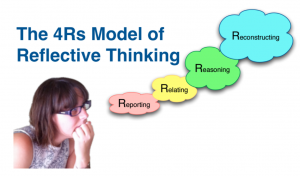Following up on the scaffolding for the SKO Brief 1 worth 30%.
Start drafting your SKO written summary this week.
Refer to your weekly SUW (shut up and write) sessions as a basis for drafting your written summary.
Remember you need to submit the following for your SKO:
i. The weekly diary g-document
ii. An SKO media artefact.
Your written summary (600-1000 words), once complete and added to your individual submission folder, will inform the design of your media artefact.
Your media artefact (which is your SKO) can take many different forms. Some of these may be appropriate for including your written 600-1000 word summary (eg editorial piece, blog or booklet) some may not (eg poster, infographic, video).
Finalising your SKO (Studio Knowledge Object) / Reflective Summary
Week10-13
Firstly re-read the SKO Brief 1.
There are two stages to finalising your SKO:
Stage 1. Complete your written summary around the three topics of Contextualising, Reflecting and Proposing future applications.
Stage 2. Create a media artefact that embodies and provides a form through which you can articulate your written summary.
You should have Stage 1 above completed by Wednesday of week 12.
You then submit your complete SKO Sunday of week 13.
Stage 1 Written summary process
Use the SKO writing resources to structure your writing. Answer the following questions. Copy the supplied Pro Forma into your Individual Google Folder. (Place your summary in the individual assessment google folder that was shared with your in week 1).
Contextualising the field of inquiry:
What field of practice does the studio investigate?
What is the intent of this field of practice?
What are the key approaches/ methods and who are the key thinkers in this field of practice?
What are the implications of these for design practice (yours/others)?
Reflecting on your learning:
What insight(s) did I gain through the studio?
Which significant events, theories, methods, thinkers and practitioners contributed to your insight?
What do you now understand and how does it affect your practice?
Proposing future applications:
What aspect(s) of the learning in this studio will you draw on for future design practice? techniques What techniques will you transfer to your future practice?
What meaning and value does this have for your practice?
How might you apply this understanding to your future practice?
Write 200-400 words on each of the three areas above.
Stage 2 Media Artefact Process
Create your SKO Media Artefact. This can be in any form. It could be:
Video
Booklet
Photo essay
Poster
Infographic
Website
Game
Set of Cards
etc
The form of the artefact should be appropriate to your practice and to the future field you wish to enter as a creative practitioner. It should be an appropriate artefact to present to potential employers or creative partners.



